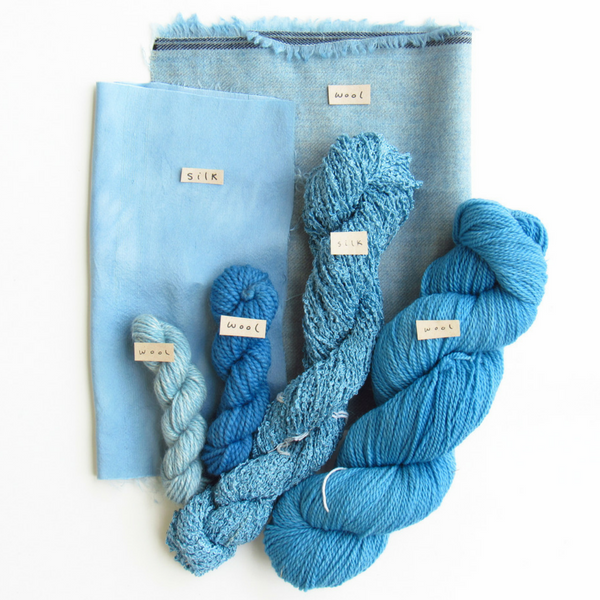This week: Substitutes for aluminum acetate and using recyclables for natural dye seed cups
Every week, we are emailed with questions from our natural dye community that are worth sharing. Of course, all of your burning questions are answered by natural dyer in chief, Kathy Hattori, Founder of Botanical Colors. This week we look at substitutes for aluminum acetate and using recyclables for natural dye seed cups.
I see you are out of Alum Acetate and wondering if there’s something else I can use until you get it back in?
Yes! Aluminum Acetate is on its way in, so we think we’ll have it in about a week to 10 days. You can also try this mordant method, courtesy of Joy Boutrup and Catharine Ellis in their book The Art and Science of Natural Dyeing. All percentages are based on weight of fiber (wof).
10% tannin (we use gallo-tannin or tara as they are the lightest colored tannins)
12-14% aluminum potassium sulfate
1.5% soda ash
Dissolve tannin or tara in boiling water and make a tannin bath with room temperature water. Use a container large enough for your goods to move easily. No need to heat – you can use a bucket or tub. Let soak for 1 hour, rotating goods. In the meantime, make your alum bath.
Dissolve aluminum postassium sulfate and soda ash SEPARATELY. Fill another container with water as above – again, this is room temperature so no need to heat this. Add the soda ash to the container and stir well. Then carefully add the aluminum potassium sulfate solution. This may bubble vigorously, so be prepared for that. It subsides quickly.
After 1 hour, remove the goods from the tannin bath. Do not rinse. Submerge it in the alum bath, rotating gently. After 1 hour, remove from the alum bath and rinse lightly. You are now ready to dye.
Notes:
- You may use other tannins, like myrobalan, cutch, walnut or chestnut, but your dyed fabrics will have a definite color shift from the influence of the tannin. This could be really beautiful, so I don’t want to discourage it, but be aware of this.
- You can recharge both baths with 50% more tannin or aluminum potassium sulfate and save water. We’ve done this up to 5 times before changing the baths.
- Mixing the tannin and alum in one bath doesn’t seem to produce good results – the colors are much lighter than if you do two separate baths. However, I don’t really worry too much about the tannin “polluting” the alum bath and we still get good results.
- These baths last about 5 days to a week, but if the tannin bath starts looking moldy, then replace it.
- Make sure you keep all iron away from the mordanted fabric as it will cause dark marks.
If I get the color I want with your Saxon Blue pretty quick after dyeing (it’s as dark as I want it) should I pull my stuff out of the vat?
Saxon Blue acts more like an acid dye with protein fibers, so I think you can remove it when you want. Try a test to make sure you end up with the color you are trying to create. Otherwise, keep it in the dye bath for a longer period of time.
I just bought a whole bunch of seeds from you and now can’t leave my house to get seed starter cups, advice?
Yes! While we are all at home there are so many fun ways to create seed starters and to also have fun with your kids making them. We just came across this article on DIY & Crafts recently on “20 Upcycled Seed Starter Pots You Can Easily Make At Home.” Going through a lot of OJ and toilet paper with the family at home? Check out ideas for how to repurpose your recyclables AND teach the family a little more about protecting the planet from waste here.

